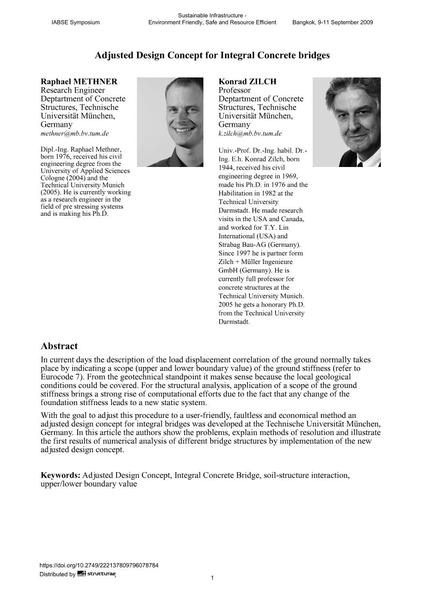Adjusted Design Concept for Integral Concrete bridges

|
|
|||||||||||
Bibliografische Angaben
| Autor(en): |
Raphael Methner
Konrad Zilch |
||||
|---|---|---|---|---|---|
| Medium: | Tagungsbeitrag | ||||
| Sprache(n): | Englisch | ||||
| Tagung: | IABSE Symposium: Sustainable Infrastructure - Environment Friendly, Safe and Resource Efficient, Bangkok, Thailand, 9-11 September 2009 | ||||
| Veröffentlicht in: | IABSE Symposium Bangkok 2009 | ||||
|
|||||
| Seite(n): | 1-9 | ||||
| Anzahl der Seiten (im PDF): | 7 | ||||
| Jahr: | 2009 | ||||
| DOI: | 10.2749/222137809796078784 | ||||
| Abstrakt: |
In current days the description of the load displacement correlation of the ground normally takes place by indicating a scope (upper and lower boundary value) of the ground stiffness (refer to Eurocode 7). From the geotechnical standpoint it makes sense because the local geological conditions could be covered. For the structural analysis, application of a scope of the ground stiffness brings a strong rise of computational efforts due to the fact that any change of the foundation stiffness leads to a new static system. With the goal to adjust this procedure to a user-friendly, faultless and economical method an adjusted design concept for integral bridges was developed at the Technische Universität München, Germany. In this article the authors show the problems, explain methods of resolution and illustrate the first results of numerical analysis of different bridge structures by implementation of the new adjusted design concept. |
||||
| Stichwörter: |
Boden-Bauwerk-Interaktion integrale Betonbrücke
|
||||
